The following article is condensed from an interview with Liz Solo about their recollections on the rise and fall of the Independent Artists Cooperative.
JE Solo Recalls the Independent Artist Cooperative (2,002-2,011)
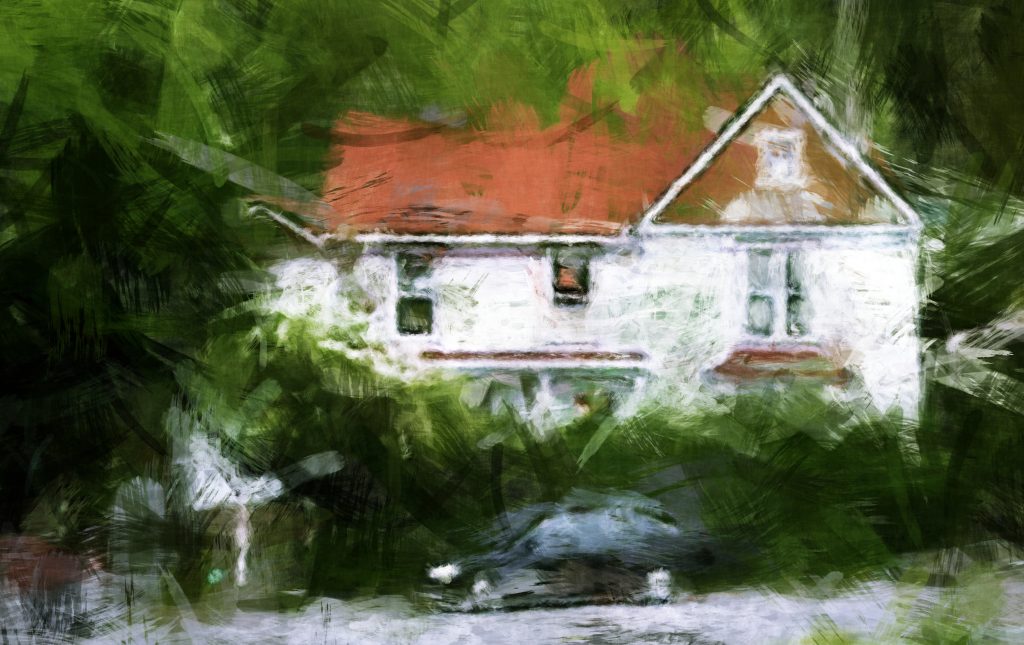
In 2002, I was searching the town for a space to house an installation and performance artwork. At the time, the City Arts Coordinator was Kay Anonsen, and I approached her to ask whether the City of St. John’s had any available spaces. Kay brought me around to a few community centres and finally to a building on 2–4 Symes Bridge Road, down by the river in the Waterford Valley.
The City’s intention for the building was in limbo. Unbeknownst to me at the time, the City had acquired it from a man named James Crane—not by purchase, but by taking it in lieu of unpaid taxes.
The James Crane Story
Years earlier, when the road up to the Southside Hills was being built, the City constructed a retaining wall directly against Jim Crane’s property. The wall prevented the hillside from collapsing onto his house, but it also retained water, effectively flooding his home.
Crane entered into years of correspondence with the City of St. John’s, seeking compensation. When no resolution came, he stopped paying his property taxes. He grew old and infirm, and the City eventually seized Crane’s home for back taxes.
At the time, Mayor Andy Wells was an outspoken champion of the environmental group Friends and Lobbyists of the Waterford River (FLOW).For some reason noone will ever know, he announced to the press that the building would be “generously donated” to the FLOW. FLOW was caught off guard; they had made no such agreement. The house was structurally compromised, in need of major maintenance, and subject to the ongoing flooding issue.
The City presented FLOW with a contract that required FLOW to assume full responsibility for repairs—an impossible burden for a small volunteer group. They declined to sign, but since the Mayor had already announced the gift in the press, they moved into the house anyway and set up their operations. For years, the Friends and Lobbyists of the Waterford River remained in a tense stalemate with the City, until they eventually drifted away and abandoned the building.
Founding the Independent Artist Cooperative

That’s where I came in to the story. When I first saw the building, it was clear it wouldn’t suit my planned exhibit. But it did offer something else: a potential hub for artists. Its layout included small rooms that could serve as studios, and larger living room areas were perfect for shared jam space—a long-standing practice in the scene at the time, multiple bands sharing jamspace. There was a need for workspace for artists in the city, a issue that continues to this day, and this house looked like a real opportunity. Kay spoke with the City and they issued a call for Expressions of Interest in potential arts uses for the building.
Naive to the house’s troubled history, and with Kay Anonsen’s support, I drafted a detailed proposal on behalf of the Independent Artists Cooperative. The City was asked to consider multiple options including: selling us the building for $1; providing an interest-free payment arrangement so we could pay it off over time; or leasing it to us at $1 per year and then selling it to us for $1 once renovations were completed. The proposal was accepted and the City chose the third option—lease it to us for $1 a year and then sell it to us for a dollar when the renovations were done. Instead of reflecting this in a contract, the City presented us with the same lease that FLOW had refused—a month-to-month lease that made us responsible for the building, but did not reflect or mention any commitments from the City.
In good faith, because we were dumb and still had trust, we took the deal and the Independent Artist Cooperative (IAC) moved in to the building. The co-op had been co-founded in 2,002 by Janis Spence (writer, director), Mike Kean (musician), Colleen Power (musician), Jody Richardson (writer, actor, musician), Paul Herridge (promoter), Susan Kent (actress, writer), Annie Ferncase (potter), and Liz Solo/me (performance artist/musician). The core mandate was to seek and share resources to offer workspace and programs to independent artists. Membership was kept accessible—$5—and the space was open to artists of all disciplines.
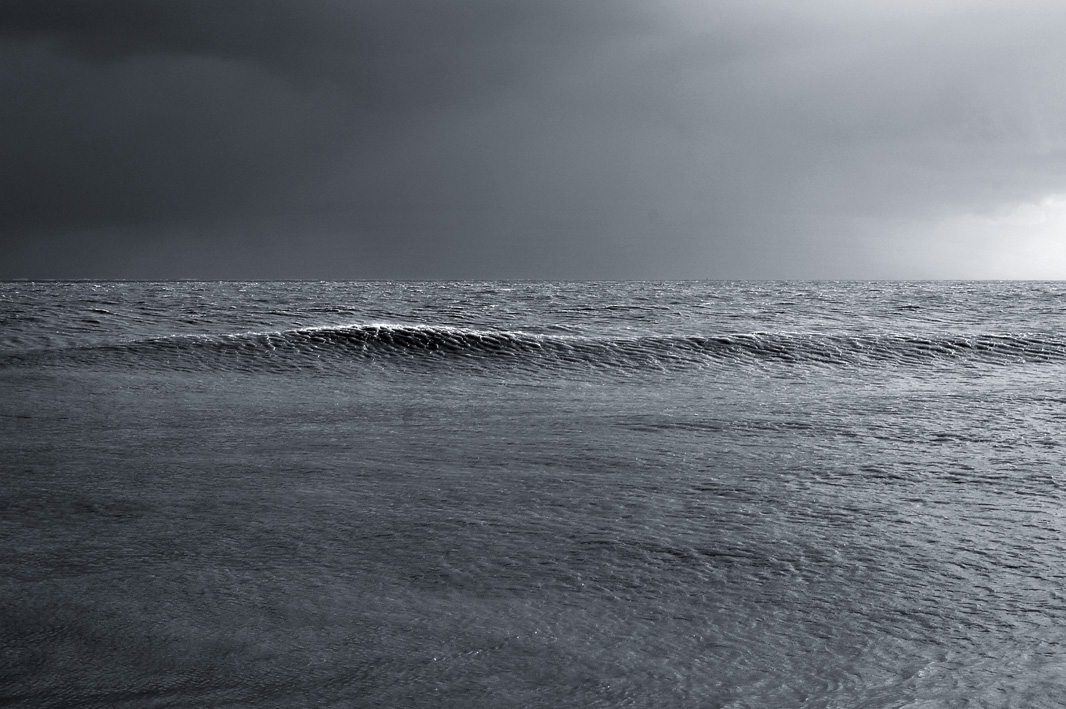
We hit the ground running. Bands moved into the jam space, writers took offices, potters and actors set up studios, and community events flourished. We shared our resources to pay the bills and to maintain and clean up the building and grounds. We accessed funding and created new projects: The Atlantic Basin Project (a digital exhibit featuring international projects from artists working all around the Atlantic basin), Graffiti Dreams (a graffiti workshop by Montgomery Hall), and Rock School for Girls (a skills sharing initiative for women and girls created by Cherie Pyne, Rhiannon Thomas, and myself) the first of its kind in the country. Our cooperative grew to served hundreds of artists and dozens of bands. We also collaborated with the Community Services Council to offer leadership workshops; Memorial University to help train students; Terminus 1525 to offer free community based arts programming, to name a few.
New entities took root and grew at the co-oop: Rock and Roll Records, a collectively-run label that released 12 records in a short span; the Chromatose Anymation Festival, a video festival showcasing work created with emerging technologies; and the Rock Can Roll Independent Music and Media Festival, which ran for five years.
The First Stone
Early in our first year, we were approached by David Fong on behalf of the Quidi Vidi Brewing Company. Inspired by our independent spirit, they offered to support our renovation project. As an independent brewery, they saw a natural connection between their work and that of our artists. Together, we developed a fundraising: Rocktoberfest, a Celebration of Independence—a music festival showcasing independent bands in the city alongside products from Quidi Vidi Brewing Company and Rodriguez Wine Vaults. For the brewery, it was both a promotional opportunity and a way to give back to the community while celebrating independence. They even pledged to donate profits from ticket and bar sales to the IAC. By our estimates, the Independent Artists Cooperative stood to earn over $40,000.
We followed all required protocols with the City of St. John’s to host the event in Bannerman Park in Fall 2002, consulting with the Events Planning Committee, the Fire Department, and our insurance agent. Rocktoberfest was officially approved at a public City Council meeting, and we began booking bands and making arrangements. This single initiative would have put us well on our way to meeting our renovation budget.
But shortly after the approval, Quidi Vidi Brewing Company received a call from the City’s Events Planning Committee informing them that Rocktoberfest had been cancelled at a private City Council meeting. The fallout was significant. Quidi Vidi withdrew, and we lost time and money invested in the planning. To make matters worse, soon afterwards, the Peace-A-Chord Festival—an event of deep historical and cultural importance to many of our members—was also removed from Bannerman Park.
The City as Adversary
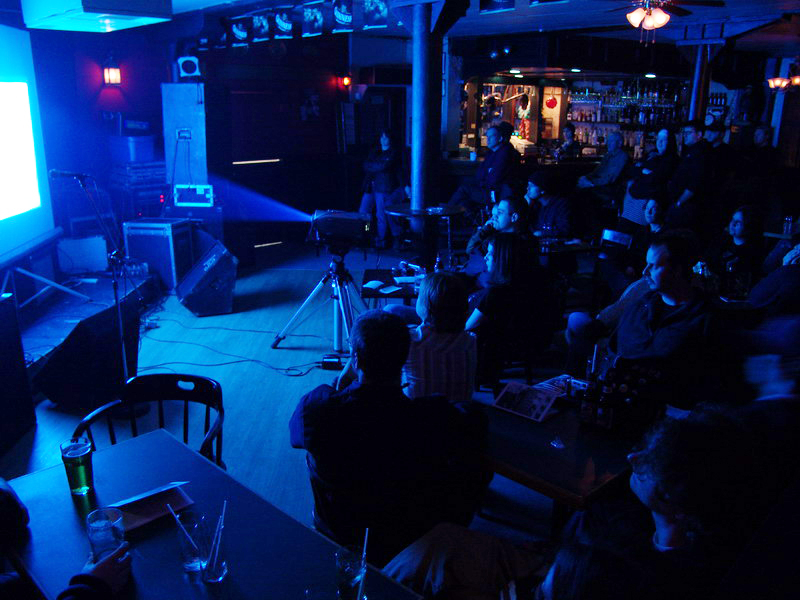
Despite all of our well-documented successes, the City of St. John’s threw obstacles in our way at every turn. Mayor Andy Wells was still sooking about his botched public announcement with FLOW years earlier, and he really resented our presence in the building. Further, in years past, I’d called him out more than one, especially when he introduced and had passed a draconian by-law banning show posters and the sharing of information via paper within the city limits. He was the kind of guy who dreamt up laws that were in conflict with the Canadian Human Rights Code, so after a small group of us pulled off a couple of well organized publicity moments, the law was repealed.
For a time, Councillor Shannie Duff was a supportive voice, but the atmosphere at City Hall was pretty toxic. It was dominated by the usual bullies, evident at City Council meetings but so much worse behind the scenes—particularly from Wells and others like the ironically named Art Puddister. I was told by insiders that Andy Wells frequently went on tirades through the building, threatening peoples’ jobs and generating fear. As I also learned the hard way, public statements by politicians rarely reflect their actual intentions or actions; decisions are personal, not civic-minded; and most decisions are made behind closed doors.
The Lost Grant
To this day, government funding for capital costs for any arts purpose is almost non-existent. In 2005, we managed to secure commitments for a Cultural Spaces Canada grant that would have covered major capital costs—repairs, soundproofing, structural upgrades, and new equipment—amounting to over a hundred and twenty-five thousand dollars. Cultural Spaces Canada were supportive of the project but they were concerned about the City’s lack of commitment on paper. Unbeknownst to us, they sent a representative, Michelle Haire, to talk to City Council to encourage them to support the project with real dollars. All CSC asked for a $40,000 commitment from the City to unlock the federal funds.
The City Council held their vote in private, not at a public City Council meeting. With Shannie Duff out of town, the council split evenly. The tie gave Andy Wells the deciding vote. He voted no. So, his personal grudges outweighed the needs of the arts community.
Without the City’s contribution, we lost the Cultural Spaces Canada grant. In the ultimate gas-lighting move, the City then turned around and ordered us to upgrade the building within 60 days or face eviction—an impossible task without the lost funding.
We Need the Deed
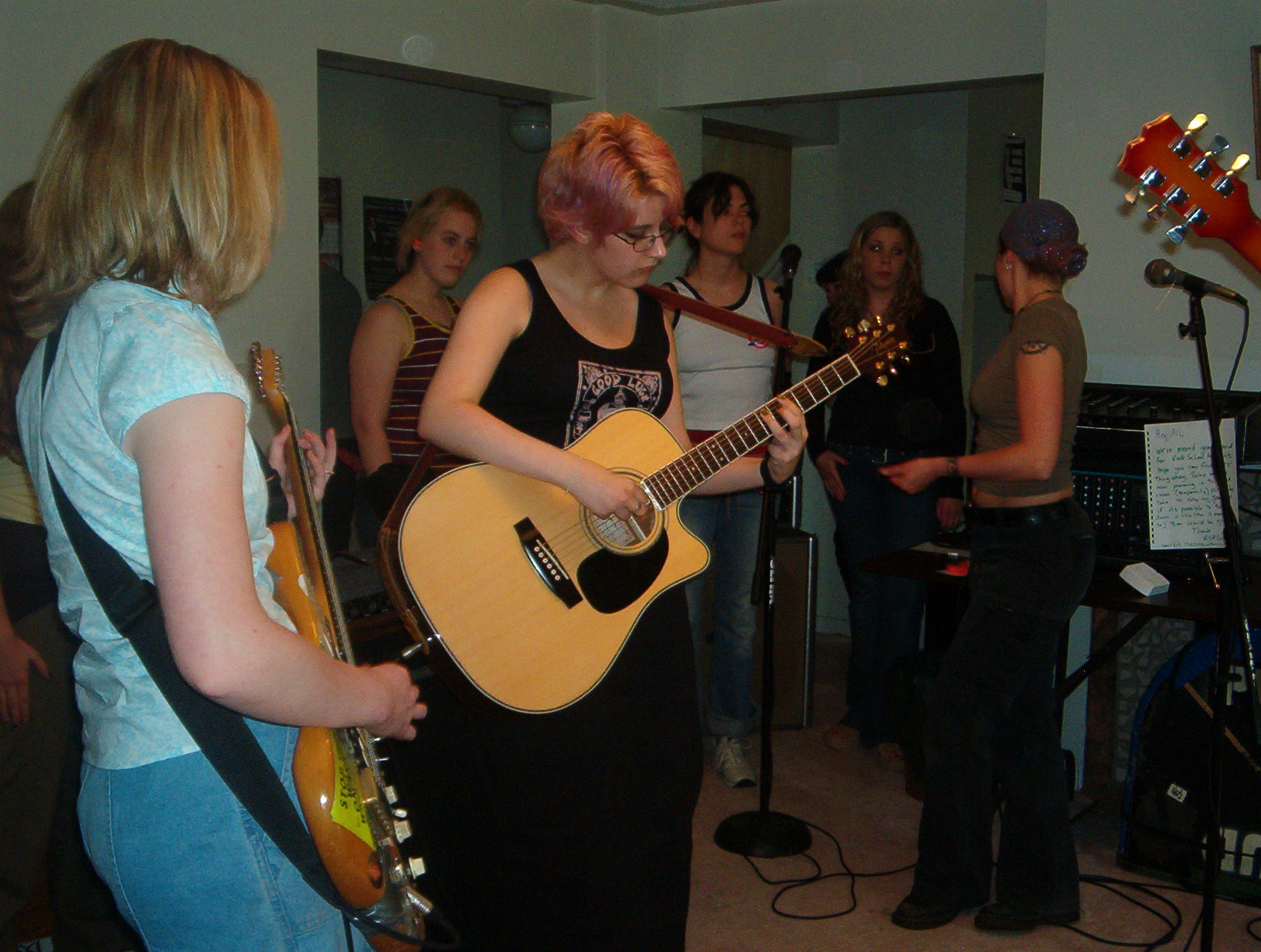
We staged a small We Need The Deed protest outside City Hall. It was maybe twelve of us, standing there with our signs. The city had gotten wind of it, so they actually had cops stationed there—watching us like we were some kind of threat.
I’ll never forget that Shannie Duff came shuffling out of City Hall in her house slippers, and she just looked so defeated. I’m very sure that had nothing to do with us, and everything to do with the toxic atmosphere inside the building. She mumbled a few words about there’s nothing I can do, and she turned and crept back into City Hall.
I was reminded of one occasion when myself and Jenny Naish had arranged an 11th hour meeting with councillors Ron Ellsworth and Art Puddister in an attempt to lobby for support. A clerk ushered us into a tiny conference room. There was a large round table with a few chairs, far to big to fit comfortably into the room, and in the centre of the table there was a giant plate of cookies. Ellsworth came in first, slid around the walls and took a seat.
He started eating cookies and kicked off the conversation with “I’m telling you right now, you’re not getting it. So just forget about it.” Puddister entered shortly afterwards and the ensuing conversation was so triggering that I can barely remember any details except that the meeting ended with me leaning across the table, feeling very flustered and betrayed, and saying, “The day I ever get in bed with you again, Puddister, will be the day I die.”
We joke about that to this day. I also still sometimes think about Shannie Duff running around City Hall in those house slippers.
Eviction and Collapse
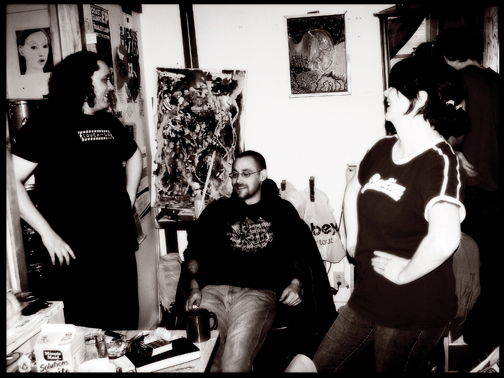
In the end, we were officially evicted by the City of St. John’s. Our building was hundreds of feet from the nearest resident but, once the blood was in the water, the locals started circling. Someone actually went around the neighbourhood with a petition against us. The petition had very few signatures and was signed by people’s kids and even by a few pets, (think “Rover Wiseman” and “Mittens Chafe”), yet it was used against us by the City of St. John’s. The complaints were absurd—chief among them that musicians were seen carrying beer into rehearsals. Just surreal.
We’d been in the building for four years and never once heard from a neighbour or received a noise complaint, or any complaint at all. We were bringing beautiful things into the world, and all we saw was that we were doing good work. We just didn’t realize how evil politician could be, and we didn’t see that in the hills all around us, a nasty hostility was brewing.
For the small group holding the co-op together—maybe three or four of us at that point—it was brutal. Then, people started calling the co-op office, misunderstanding the situation and trying to scam us for the building. Worse than that, colleagues drove by the building, slowly, pointing, while we were still working inside. One day we looked out the window and saw someone measuring the property. It reminded me of vultures feeding on a carcass.
Changing Funding Models

We cut our losses and moved out. Eventually, the City tore down the building and sold the land for a healthy sum. I realize now that this was most likely their intention all along. We rented a studio in the Baird Buildings on Water Street and configured it as a rehearsal and presentation space. The Independent Artists Cooperative carried on for another seven years, but it was never quite the same. The final turning point came with shifts in how the primary arts funders structured their programs
Previously, we had been able to link municipal, provincial, and federal support to provide programs and services. We had even received funding from unlikely sources–Agriculture and Agri-Foods Canada funded our recording projects one year because at the time they offered grants that supported co-operatives. With a creative approach, we could piece together enough resources to serve the wider arts community.
But in the late 2000s, funding models began to change. Arts-based groups were increasingly required to define themselves as “service organizations” in order to qualify for certain supports. Within a few years, entities like ours—artist-run, grassroots, and interdisciplinary—no longer fit the criteria for offering programs. We were only eligible for project grants, which could support artistic initiatives but not the ongoing programs, education, and community services we had built our cooperative around.
We could easily run a communal jam space by sharing resources, but without program funding, we could no longer sustain our programs and services. Our ability to offer workshops, supports, and free community programming was cut off at the root. Without those resources to offer, we had little to attract or retain members.
From Cooperative to Collective
At the last IAC meeting, three of us showed up—myself, Mike Kean, and Marcel Levandier, also known as our band The Black Bags. It was clear the cooperative could not continue in its original form, but with the arts in Canada (or indeed anywhere), if you have two or three people with similar values who still care about something, then you have more than most.
We made the decision and went about formally dissolving the Independent Artist Cooperative. We redefined Rock Can Roll as an artist’s collective. We named the collective after ourselves, and RCR became the BBMC (Black Bag Media Collective). In 2017, the BBMC relocated out of St. John’s to Toronto and the work of the collective continues to this day.
Though the Independent Artists Cooperative is no more, its legacy lives on in the BBMC—in the work we do, in the valuable lessons we learned about the fragility of artist-led spaces, about cultivating resilience in the face of treachery, and about the political and economic obstacles that undermine the good work of community-driven initiatives.


